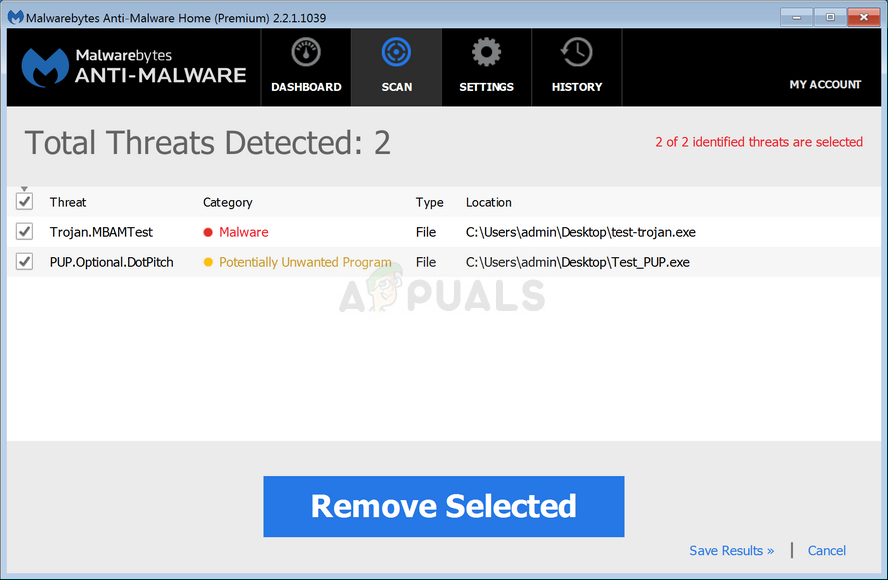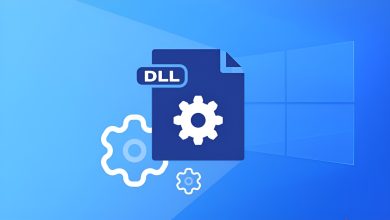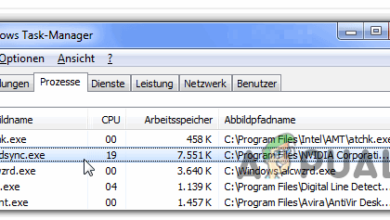What is Smartwebapp.exe and should I Remove It?
Some users are asking us for assistance after discovering a process named smartwevapp.exe that is taking up a lot of system resources. Other users are bothered by the fact that they keep seeing smartwebapp.exe System Error that keeps reappearing no matter what they do. This executable is typically encountered on Windows 7, Windows 8.1 and Windows 10.
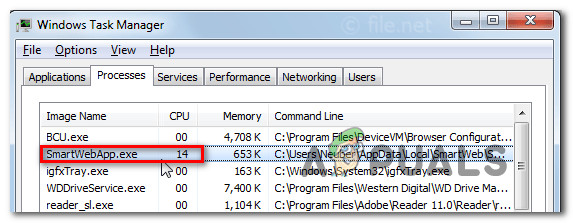
What is Smartwebapp.exe?
After investigating this executable extensively, it turns out that smartwebapp.exe, as well as the swhk.dll Dynamic Link library file, belong to a program called SmartWeb. This application is developed by Soft Brain Technologies, a company known for delivery applications with Adware integration.
SmartWeb is marketed as an add-on extension that will show interested shoppers advantageous offers on the web. After it gets installed on your computer, SmartWeb will begin showing pop-ups with coupons and competitive prices for the sites that you’re visiting.
The reality is, the program is very intrusive and will display ads whether you want them or not. Expect to see advertising banners, pop-up banners, in-text ads, and other forms of ads. The majority of ads that you’ll be bombarded with are aimed at making you install shady toolbars, optimization utilities, and other products with the ultimate goal of generating pay-per-click revenue for SmartWeb.
Most security researchers consider this app as being a PUP/PUA (Potentially Unwanted Application/Program).
Is Smartwebapp.exe safe?
Although smartwebapp.exe is not technically a virus PUA’s are known for a long list of unpleasantries caused on computers where they find their way on.
In most cases, a PUA will cause pop-ups, redirect your browser and even change your default search engine. More advanced PUA’s will also track your browsing and monitor user behavior. Applications of this kind are installed un-intentionally by users, as they are often being bundled with other software that you end up installing.
Although SmartWeb is not a harmful browser add-on and it doesn’t have spreading capabilities, it’s often bundled with other applications, so chances are it got installed without your permission.
Should I remove Smartwebapp.exe?
If you’re not bothered by an unnerving browser extension that got installed without your permissions, then you might not want to uninstall it. But if you’re tired of the constant pop-ups and adds that this app delivers, you should take the appropriate steps to remove the application.
Pop-ups are notoriously known for being extremely angering, so the vast majority of users that end up having this undesirable extension want to remove it.
How to Remove Smartwebapp.exe?
Removing this annoying PUA is not as easy as you might have imagined. To ensure that you’re not leaving behind any files that might still cause the issue, you need to follow a 3 step process. This ensures that you’re not leaving behind any remnant files that will continue to pump your browser full of ads.
Here’s what you need to do:
Step 1: Uninstalling the SmartWeb parent application
In this first step, we will identify and uninstall the parent application that installed the SmartWeb in the first place. Identifying the culprit is not as easy as it sounds, but as you’ll see below, several signs will give the app away.
Here’s a quick guide on uninstalling SmartWeb’s patent applications:
- Press Windows key + R to open up a Run dialog box. Next, type “appwiz.cpl” and press Enter to open up the Programs and Features window.

Type appwiz.cpl and Press Enter to Open Installed Programs List - When you’re inside the Programs and Features scroll down through the list of installed applications and see which application was installed around the time you started seeing evidence of the SmartWeb browser extension. Also, keep a lookout for shady-looking apps that you don’t remember installing.
- Once you have your culprit, right-click on it and choose Uninstall from the newly appeared context menu.

Uninstalling the Suspected Application - Follow the uninstallation instructions and restart your computer once the process is complete.
Step 2: Remove the Extension/ Add-On from your Browser
Now that the parent application is removed, let’s take the appropriate steps to ensure that your browser is free from any SmartWeb files.
As you can imagine, the steps of doing so will be different depending on which browser you’re using. Here are several guides that will cover the most used browsers:
Removing SmartWeb from IE
- Press Windows key + R to open up a Run dialog box. Then, type “inetcpl.cpl” and press Enter to open up the Internet Properties screen.
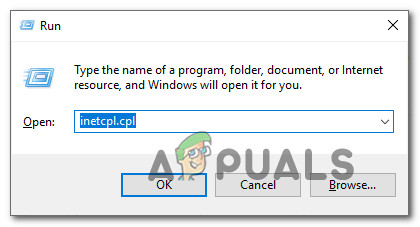
Opening the Internet Properties screen - Once you’re inside the Internet Properties screen, go to the Advanced tab and click on the Reset button at the bottom of the screen.

Resetting the Internet Explorer Settings
Removing SmartWeb from Chrome
- Ensure that Google Chrome is completely closed.
- Open File Explorer and navigate to the following location:
C:\Users\*Your Username*\AppData\Local\Google\Chrome\Application\User Data
Note: Replace *Your Username* with your username.
- Right-click on the Default folder and choose Rename from the newly appeared context menu. Rename the Default folder to Default2 or something different, to force Chrome to create a new folder at the next startup.
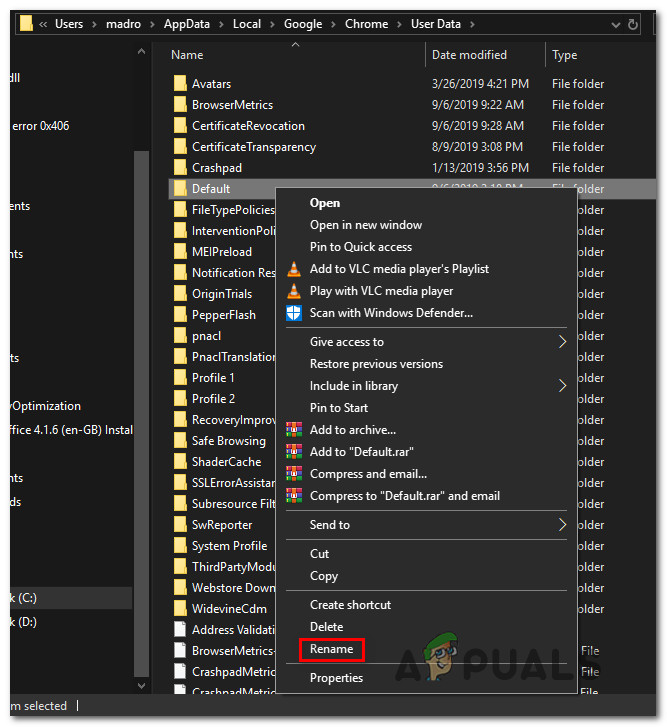
Renaming the Default folder
Removing SmartWeb from Firefox
- Open Firefox and click the action button in the top-right corner. Then click on Help, then choose Troubleshooting Information from the next menu.
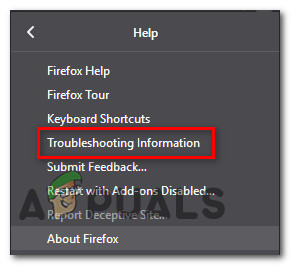
- Click on Refresh Firefox and wait for the process to complete then restart your computer.
Step 3: Perform a system-wide virus scan
Now that the browser is cleaned off the SmartWebApp executable, you should scan your system to ensure that you don’t have any other files that might still cause pop-ups and other types of malware.
The easiest way to make sure of this is to use an efficient scanner like Malwarebytes. It’s entirely free and is known to identify the majority of malware that will exhibit this behavior.
To make things easier for yourself, follow this article (here) for step by step instructions on performing a deep scan and removing PUP applications that might still cause pop-ups.
